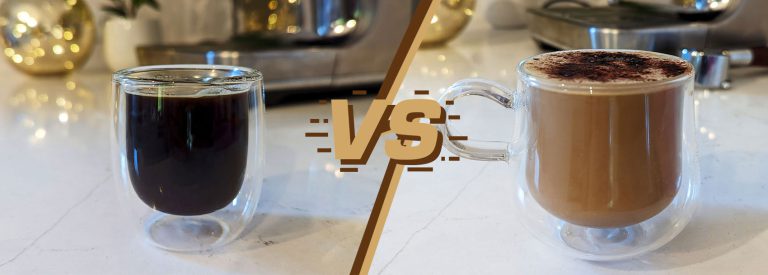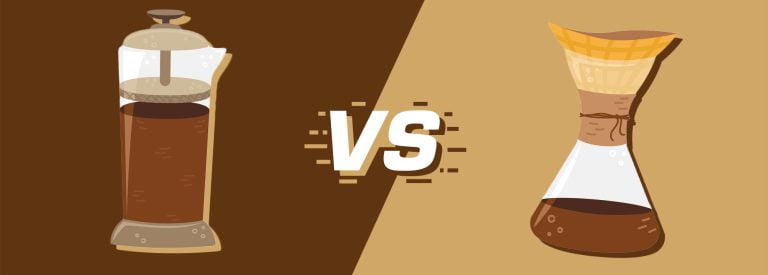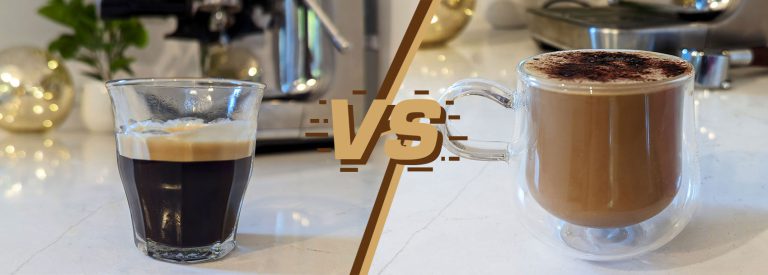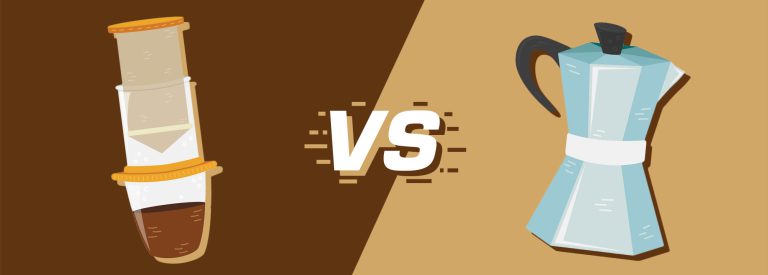Lungo vs Flat White: The Differences Explained
Lungo and flat white are two popular cafe staples that stir curiosity among new coffee enthusiasts.
Let’s look into their similarities and differences, and see what sets them apart. Whether you’re a seasoned barista or just curious, there’s always something new to learn in the world of coffee.
Key takeaway: What’s the difference between a Flat White and a Lungo?
The Lungo is an espresso variation made by passing more water through coffee grounds, resulting in a ratio of 1:4 to 1:5 and producing a milder yet still somewhat bitter flavor, coupled with a rich but fluid mouthfeel. In contrast, the Flat White combines a double espresso (or double ristretto) with 2 parts steamed milk, leading to a balanced but strong flavor and a velvety mouthfeel enriched by a thin microfoam layer.
Now let’s dive deeper into each drink.
What is a Lungo?
Lungo, which means “long” in Italian, is a variation of the espresso with a larger volume. Its unique brewing process involves passing more water through the ground coffee, resulting in a milder, larger serving than your traditional espresso.
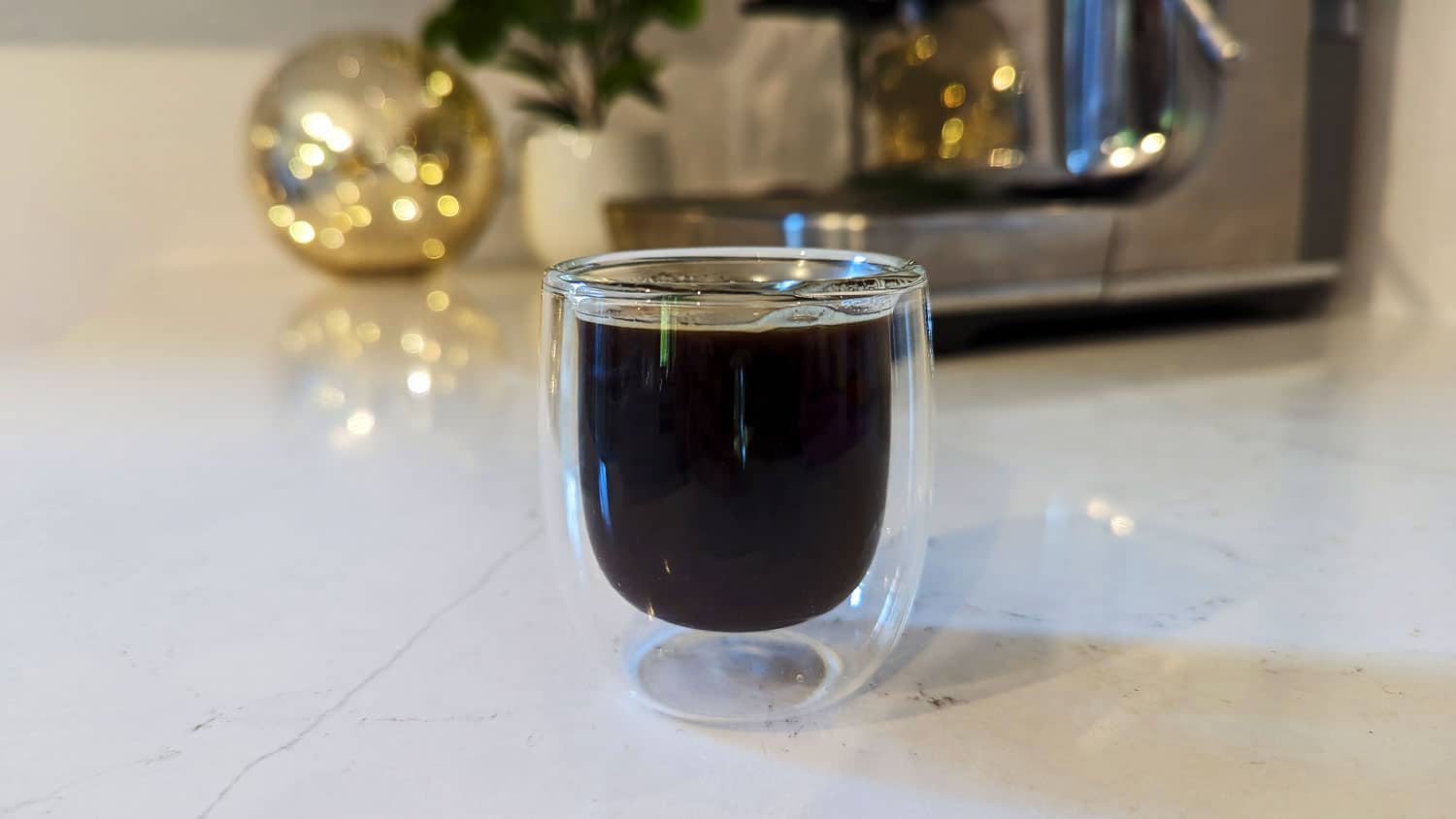
The Lungo has a coffee-to-water ratio of 1:4 to 1:5 using 7g of coffee grounds per shot, while specialty coffee enthusiasts opt for 9g of ground coffee. This results in a serving size of 2 oz (60 ml) you can pour into a larger demitasse with a capacity of 90 ml (3 US fl oz).
A single shot of Lungo contains about 60-80 mg of caffeine and just 2 calories. The calorie count is too little though so I just consider the Lungo calorie-free.
Taste-wise, the Lungo maintains a strong and somewhat bitter flavor profile, although it’s not as concentrated as traditional espresso. Meanwhile, the texture is balanced – fuller than an Americano yet less syrupy than an espresso, resulting in a rich, yet fluid mouthfeel.
There is a way to keep the bitterness from overwhelming the lungo though, by grinding your beans coarser than an espresso. You still want an extraction time that’s a little more than an espresso, but not much more. But you’ll notice that the coarser grinds will let more water pass through.
Here are the steps to making a Lungo this way:
- Start by grinding coffee beans using a setting slightly coarser than that for espresso.
- Measure your yield using a timer and scale as you brew.
- Aim to stop brewing around the 35-second mark, targeting a 1:4 to 1:5 coffee-to-water ratio.
For more details on this recipe, read my step-by-step guide on how to make a Lungo.
Next, let’s look at what a flat white is.
What is Flat White?
Originating in Australia, the flat white is seen as a cousin to the latte or cappuccino but stands out by using more coffee in its recipe. This gives the drink its signature velvety texture and smooth taste.
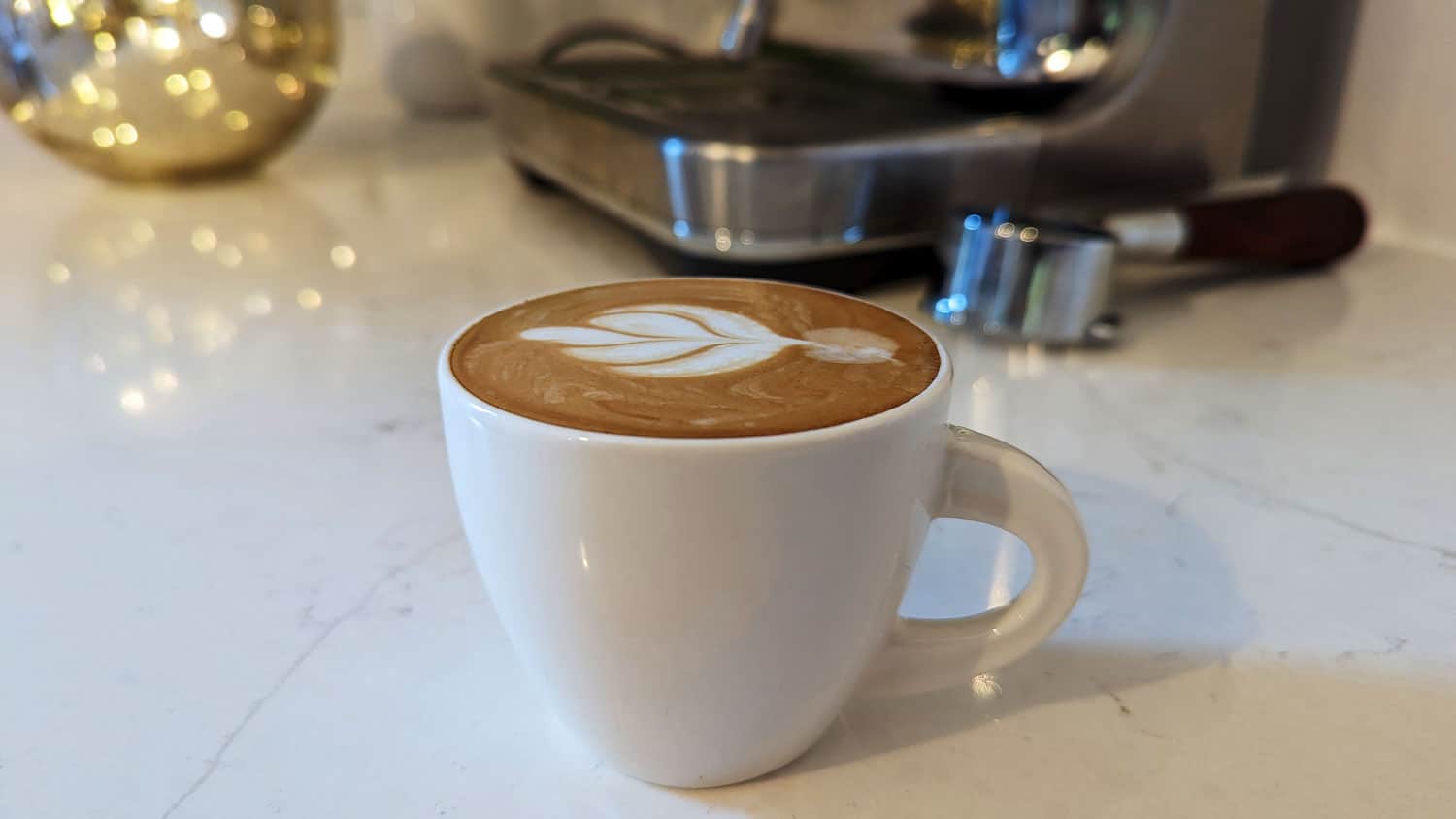
A flat white uses a double espresso shot or double ristretto for its base. It requires 14g of coffee beans for the double shots (18g for third-wave specialty coffee), regardless of whether you are using ristretto or espresso. This is then combined with 2 parts steamed milk and a thin microfoam layer on top. You always add latte art to the flat white, since this is a specialty coffee drink.
The serving size of the beverage is around 5 to 6 oz (150 to 180 ml) with each 150ml serving packing 58 calories and 120-160mg of caffeine. I enjoy my flat white in a cappuccino cup with a capacity of 150-210 ml (5-7 oz).
What I like about the flat white is its enhanced intensity from the double espresso or double ristretto combined with the rich creaminess of the milk. The flavors and strength are balanced, and the texture offers a velvety and smooth mouthfeel.
Here’s how you can make a flat white:
- Prepare a double espresso/double ristretto.
- Fill a steaming pitcher with cold milk up to the spout’s bottom.
- Heat and aerate the milk till it hits around 160 degrees Fahrenheit, ensuring a silky microfoam texture.
- Pour the steamed milk over your coffee.
- Ensure that the thin microfoam layer is level with the cup’s brim.
Avoid making mistakes when brewing a flat white by following my step-by-step guide on how to make a Flat White.
Lungo & Flat White: Comparing Two Coffees
Here’s an overview of the characteristics of Lungo and flat white:
| Aspect | Lungo | Flat White |
|---|---|---|
| Taste and Texture | Strong, somewhat bitter; less concentrated than espresso; Rich yet fluid mouthfeel. | Strong yet balanced; velvety and smooth with a thin layer of microfoam. |
| Coffee-to-Water Ratio | 1:4 to 1:5 | Espresso: 1:2 to 1:3; Ristretto: 1:1 |
| Ingredient Ratio | Just coffee with more water than an espresso. | Double espresso/ristretto, 2 parts steamed milk, & thin microfoam layer on top. |
| Typical Serving Size | 2 oz (60 ml) | 5 to 6 oz (150 to 180 ml) |
| Caffeine Content | 60-80 mg per single shot | 120-160 mg for the double shot of espresso/ristretto |
| Calories | 2 calories per shot | 58 calories for a 150 ml serving |
| Acidity | Moderate | Low to moderate |
| Brewing Difficulty | Intermediate | Home barista |
| Bean Roast | Light to medium roasts | Medium roasts |
Now let’s get into the details of these two coffee drinks:
- Ground Coffee Weight & Ratios: A serving of Lungo uses 7g of coffee grounds (9g for third-wave coffee) with a 1:4 – 1:5 coffee-to-water ratio.
Because flat white uses double shots of either espresso or ristretto, you’ll need 14g of coffee (18g for third-wave coffee) and follow a brew ratio of 1:2 to 1:3 for double espresso, or 1:1.5 for double ristretto. One part coffee is then topped with 2 parts steamed milk with a thin microfoam. - Taste: The Lungo, essentially a “long espresso,” has a pronounced, somewhat bitter flavor profile that’s less concentrated than a regular espresso. The Flat White, on the other hand, tempers the concentration of the coffee with milk, offering a balance between intensity and creaminess. It is still stronger than you would expect, thanks to the double espresso base.
- Volume, Calories, & Caffeine: A Lungo is slightly larger than the espresso, yielding a volume of around 2 oz (60 ) with just 2 calories and 60 to 80mg of caffeine.
The flat white is larger in volume, about 5 to 6 oz (150 to 180 ml) per serving, and each serving is packed with 58 calories with 120 to 160mg of caffeine. - Bean Roast: For Lungo, I use light to medium roasts which help balance the beverage’s slightly bitter profile. Meanwhile, flat white shines with medium roasts, which complement the milk perfectly.
- Steamed Milk: Unlike Lungo, the flat white uses milk in its recipe. I steam full-fat milk for my flat white, but sometimes I also use alternatives like soy, almond, or oat milk. If you’re just getting started, check out my guide on how to steam silky milk for your coffee.
- Serving Suggestions: I’m not a big fan of Lungo because of its bitter profile, so whenever I crave a milder drink, I go for Americano or AeroPress instead. But that’s just me, other people like it.
As for flat white, I often drink cortado if I want a milky espresso, but I like how flat white has that extra kick from the double espresso or double ristretto. Be careful though not to overdo the caffeine.
As you can see, these two drinks have a lot of differences. While they both begin with an espresso machine, the different extraction times and the added milk result in very different flavors for the final drinks.
Speaking of espresso machines, make sure that you don’t waste your shots by choosing only the best espresso coffee beans this 2024.
Conclusion
I’ve been a barista for years and between the two, I like making flat whites for myself more than the lungo. I really enjoy how it still emphasizes the intensity of coffee in my cup while blending it with the creaminess and sweetness of milk.
That’s just me though. At the end of the day, the better brew is up to you. Share your thoughts in the comments section below.



